A trip to Rome is a real challenge for the curious. It is impossible to see all the sights of Rome for one visit, and it is equally impossible to choose what it is worth to look at first, the city is diverse and interesting in every corner of it.
Content
- main attractions of Rome
- Roman Forum
- Piazza Navona
- Pantheon
- Trevi Fountain
- Vittoriano
- Circus Maximus
- Capitol Hill
- Palatine
- Vatican
- Arch of Constantine
- Spain Area
- Appia
- Villa Borghese
- Baths of Caracalla
- Mouth of Truth
- ChurchSanta Maria Maggiore
- Campo de Fiori
- Roman Catacombs
- Video. Eagle and tails. Rome
- Video.7 interesting facts about Rome: from ancient civilization to this day
- Video.10 interesting places of Rome
Rome - an unusually eclectic city. Here, Catholic churches and modern buildings are mixed, medieval markets and ancient ruins, history and modernity, majestic buildings and awful slums, modest monks and bright freaks. .. all this creates an inimitable, amazing modern Rome. In a sense, this eternal city remains the center of the world.
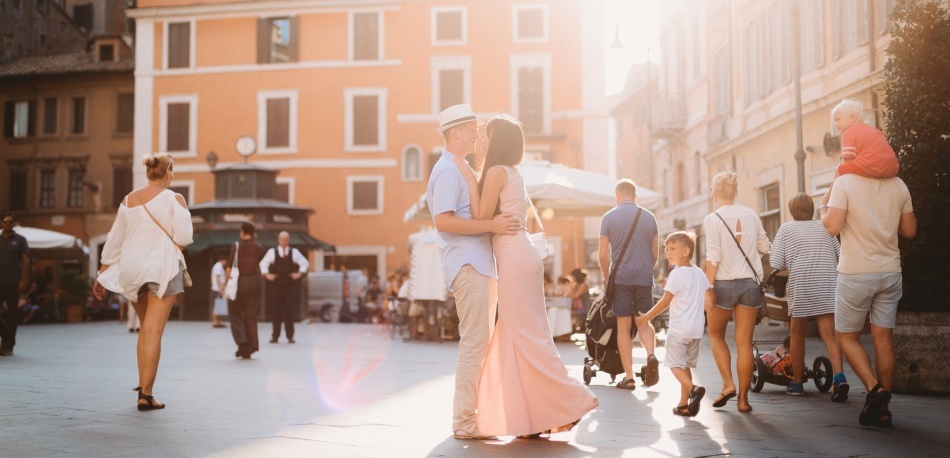 Rome - the eternal city
Rome - the eternal city The main attractions of Rome
Roman Forum
Perhaps it is the oldest part of the city that remembers the wheels of chariots and the footsteps of Roman emperors, a thousand years ago. This area of Rome was built in the time of the mysterious tribe of the Etruscans - the predecessors of the ancient Romans.
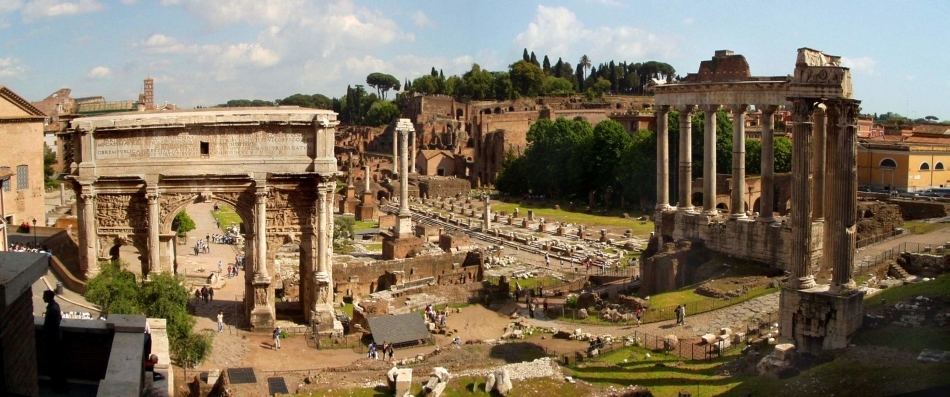 Roman forum
Roman forum Here they honored the heroes and arranged triumphal marches in their honor, held elections to the Senate and announced the most important news to the citizens. Today the forum looks like a heap of ruins, but with imagination and minimal knowledge of history, one can imagine how everything looked 2,5 thousand years ago. The forum's place is simply strewn with remains of temples, basilicas and triumphal arches.
 The ruins of the Roman forum
The ruins of the Roman forum Following are the most noteworthy constructions of the forum.
- The triumphal arches of the were erected by the emperors in honor of the victories over their enemies. The arch of Titus is most well preserved in honor of the victory in the Jewish War and the arch of Septimius Severus in honor of the victory over the Parthians
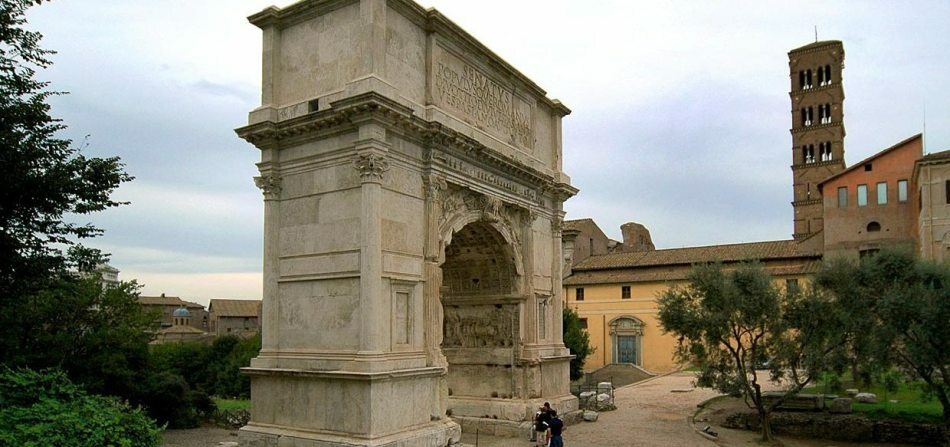 Triumphal Arch of Titus, Roman Forum
Triumphal Arch of Titus, Roman Forum - Curia Julia is the place where the Senate was going. A rectangular brick building accommodated up to 200 senators. Unfortunately, the original curia building did not survive. What tourists see today is the reconstruction of the building. From the interior decoration also nothing is left
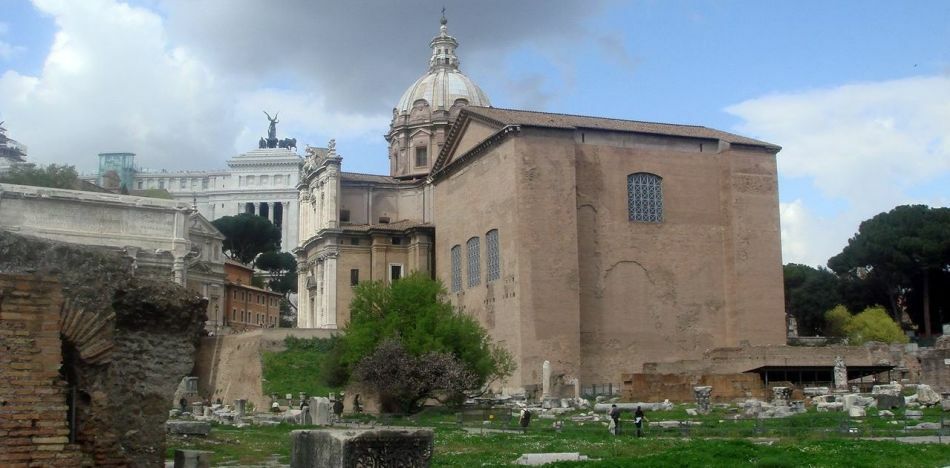 Curia Julia, Roman forum
Curia Julia, Roman forum - Rostrum Rostra - a tribune, built for speakers. Rostra was 3 meters in height, so that the speaker was high above the crowd and was clearly visible from any point of the square. Rostra received its name in honor of the rostra( noses of antique ships) belonging to enemy ships captured in the Battle of Ancia in 338 BC.
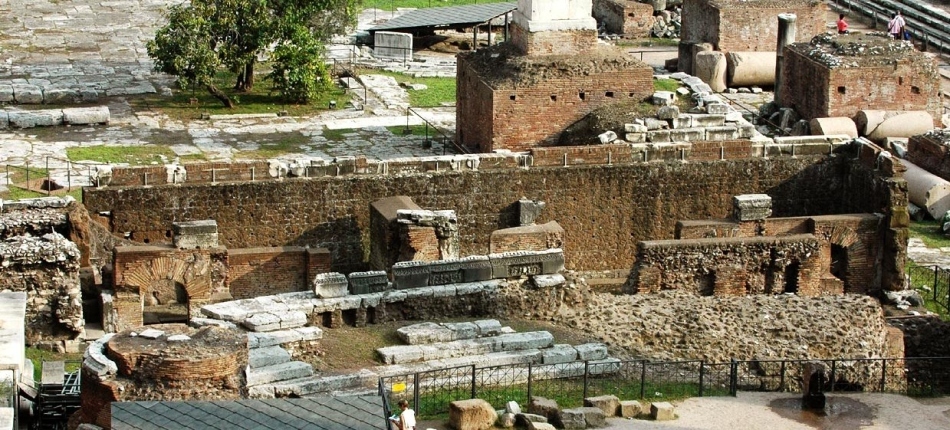 Tribune Rostra, Roman Forum
Tribune Rostra, Roman Forum - Temple of Saturn .The current ruins date back to 42 BC.The temple was used as the state treasury( Eury).It also houses banners of legions and senatorial decrees( decrees).Also the temple served as the starting point for all distances in the Roman Empire
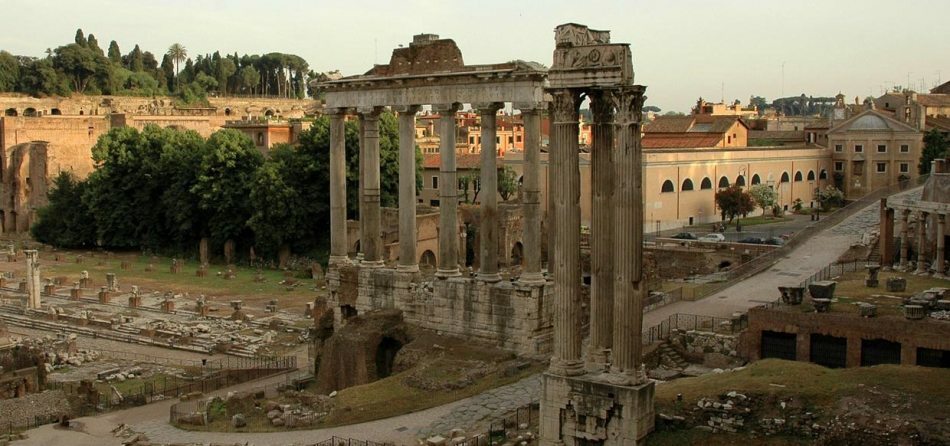 Temple of Saturn, Roman Forum
Temple of Saturn, Roman Forum - Basilica Emilia - the oldest on the basilica forum built in 179 BC.It is noteworthy that originally the basilica was erected as a place where noble townspeople could hide from the weather and spend their time comfortably. Here there were trading rows, state banks and exchange offices. The basilica was completely destroyed during the siege of Rome by the Visigoths in 410 AD
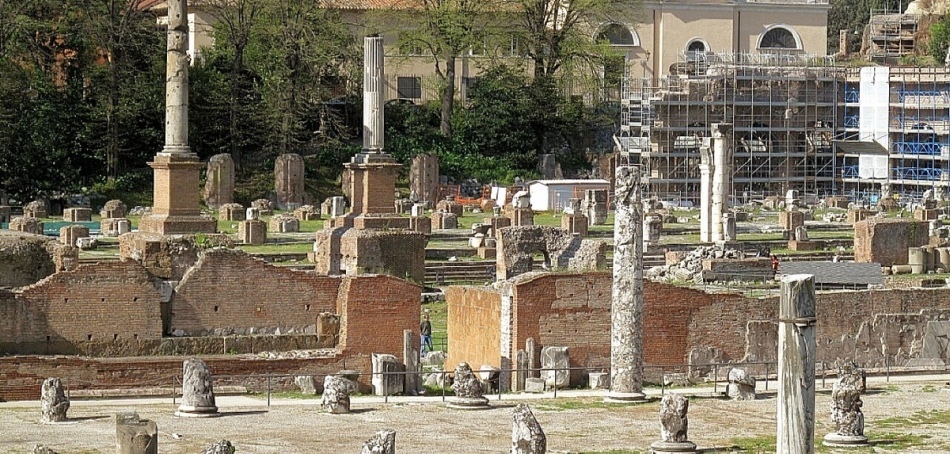 Basilica Emilia, Roman Forum
Basilica Emilia, Roman Forum - Temple of Vesta .Vesta is the patroness of the family and state in ancient Rome, one of the main goddesses of the pantheon. In this temple, the Vestal( the servants of the Vesta cult) guarded the sacred eternal fire, personifying eternal life. Vestal became a girl from an aristocratic family chosen by the council of priests
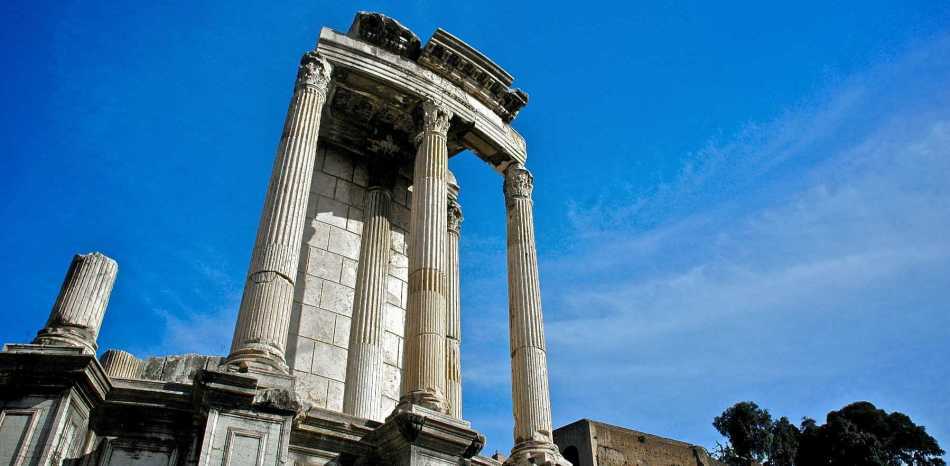 Temple of Vesta, Roman Forum
Temple of Vesta, Roman Forum - . The girl's service in the temple was 30 years, during which she was obliged to remain a virgin, otherwise the vestal was buried alive. At the end of the service the vestals received lifelong maintenance from the state( not very small), as well as many benefits and privileges. Remnants of the Vestal house can be seen next to the Vesta temple
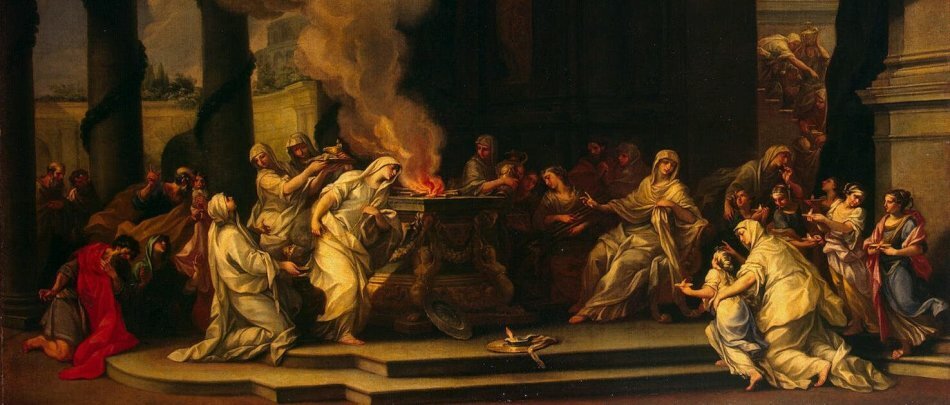 Fragment of the painting by Alessandro Marchesini "Sacrifice of the Vestal"
Fragment of the painting by Alessandro Marchesini "Sacrifice of the Vestal" - Temple of the Romulus of the Divine .Opposite the house of the Vestal, there is the round temple of Romulus, which has been perfectly preserved since the time of its original construction due to the fact that it was included in the complex of buildings of the Basilica of Saints Domian and Kozma. The temple has never been rebuilt, and even the massive iron front door is the original
 Romulus Temple, the Roman Forum
Romulus Temple, the Roman Forum - The Maxiense Basilica is the last of the temples built in the times of Ancient Rome. The construction was started by Emperor Maxentius and completed by Constantine. The temple had a very impressive size and a huge 12-meter statue of Constantine, whose fragments can now be seen in the courtyard of the Palazzo dei Conservatory in the Vatican.
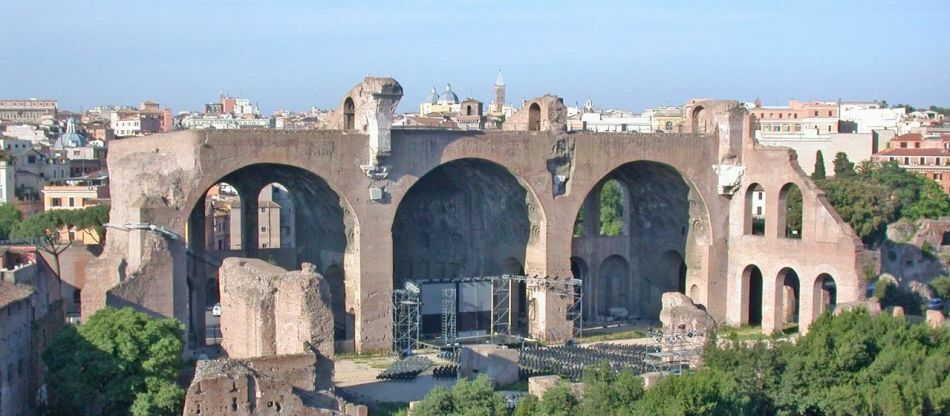 The Basilica of Maxentius, the Roman Forum
The Basilica of Maxentius, the Roman Forum - The Temple of Venus and Roma The is the largest religious building of the times of Ancient Rome. The temple would have been built under Adrian and occupied a huge area from the Basilica of Maxentius to the Colosseum.
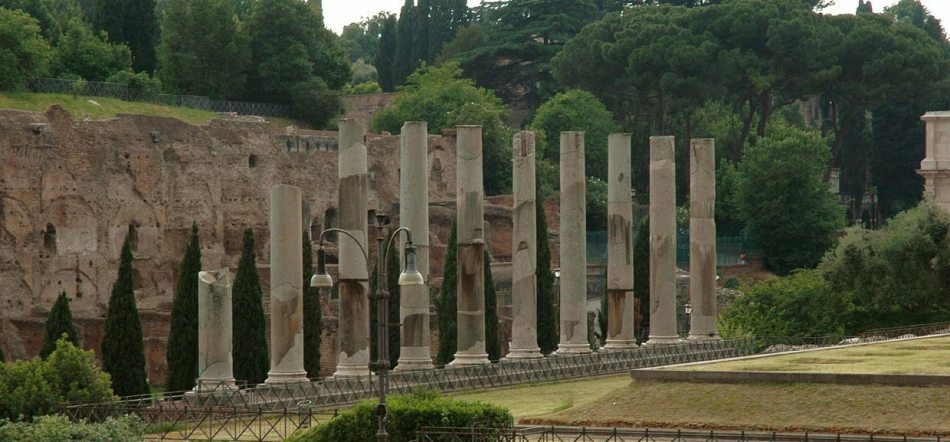 Temple of Venus and Roma, Roman Forum
Temple of Venus and Roma, Roman Forum - Column of Foca is a 13-meter column that was built in honor of the Byzantine Emperor Focky on the occasion of his visit to Rome. At the top of the column was installed a gilded statue of Focky, which is now lost to the
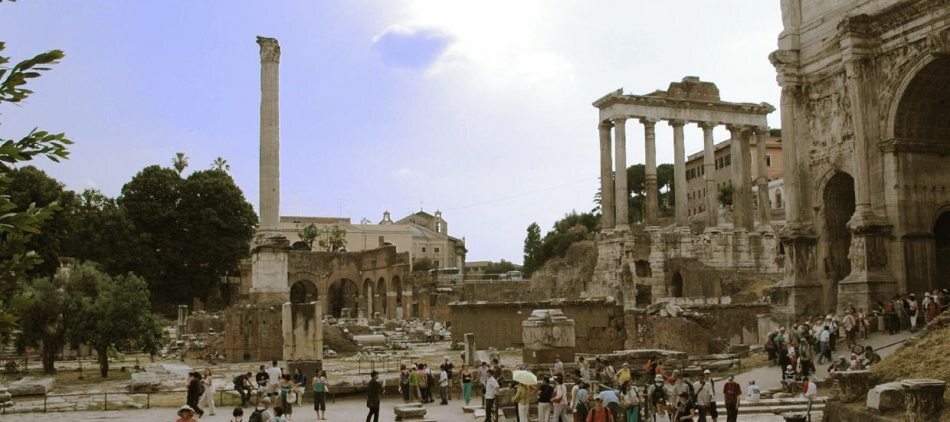 Column of Foca, the Roman forum
Column of Foca, the Roman forum - The Colosseum was originally called the Flavian amphitheater( dynasty of the Roman emperors) and was built under Vespasian, the founder of the dynasty. The name of the amphitheater was obtained from the giant statue of Nero, in the place where it was built. The statue was called the Colossus, the name of the Colosseum in Italian sounds like Colosseo
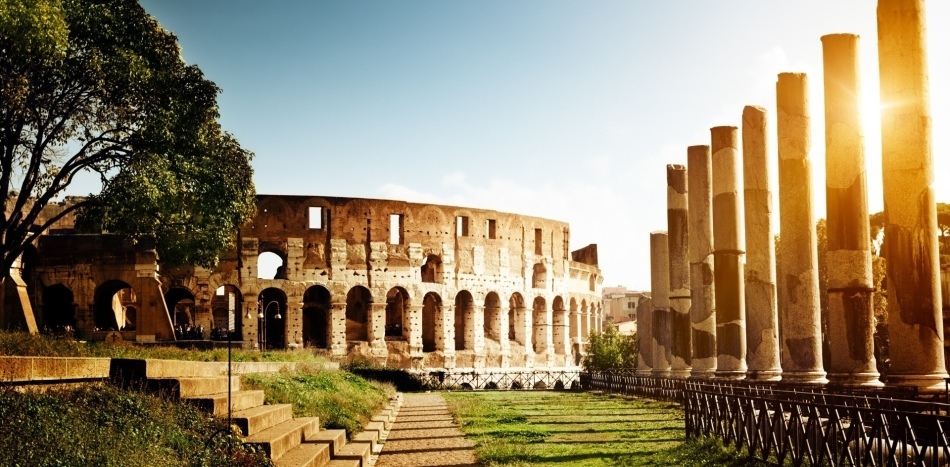 The Colosseum, the Roman forum
The Colosseum, the Roman forum - The Colosseum accommodated up to 55,000 spectators, there were 80 entrances to the public, the four upper floors were used for spectator places( the lower classes occupied the uppermost ranks)and in the underground floors were located office space and cages with wild animals. To protect spectators from the sun, the Coliseum was covered with a huge awning, for the installation of which a team of 1000 strong men
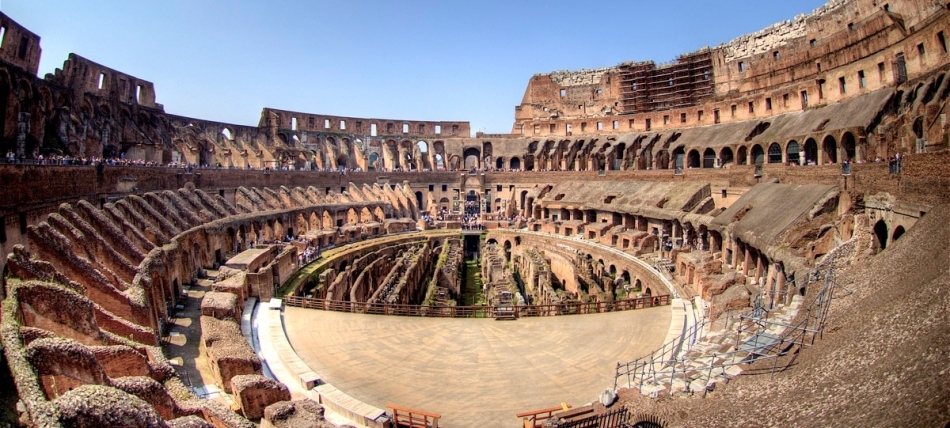 Colosseum was used, the Roman forum
Colosseum was used, the Roman forum - The Colosseum was used for free games, the quantity and entertainment of which measured the greatness of the emperor. Usually games were held for several days and ended with gladiatorial battles and fighting with wild animals. The longest games took 100 consecutive days and were dedicated to the accession to the throne of Emperor Titus.
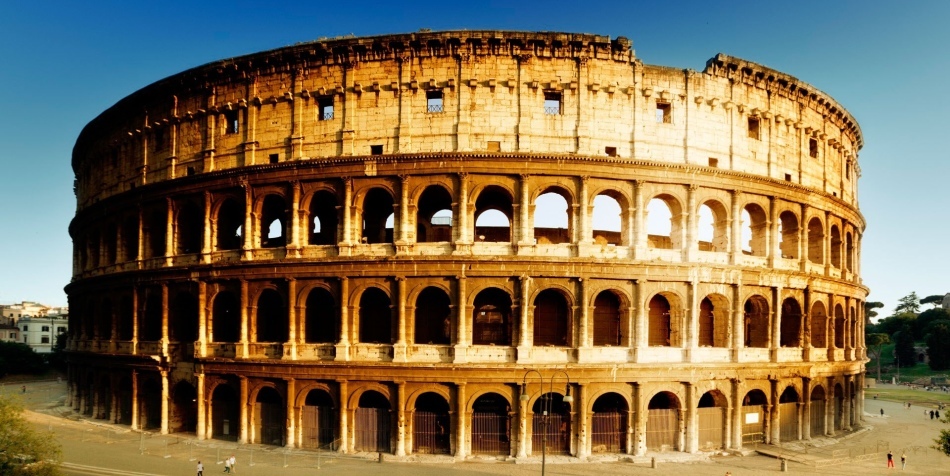 The Colosseum, Rome, Italy
The Colosseum, Rome, Italy Piazza Navona
Piazza Navona is one of the most famous, and perhaps the most beautiful of all the squares of Rome. It was built on the site of the Domitian stadium and repeats its outlines. There are several independent tourist objects on the Navona Square: the Fountain of the Four Rivers( Nile, Ganges, Danube and Rio de la Plata), the Fountain of Nettuno, the Fontana del Moro and the Church of Saint Agnes of Rome, the early Christian martyr.
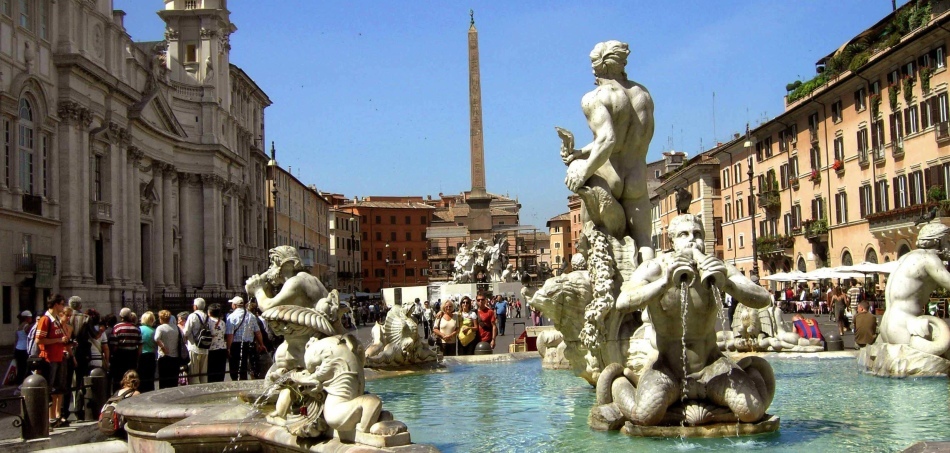 Area of Navona, Rome, Italy
Area of Navona, Rome, Italy Pantheon
The Pantheon is a temple of all gods, built over 1800 years ago. In 609 AD the church was turned into a Christian church of St. Mary and the martyrs and presented to the Pope Boniface IV.The internets inside the temple for a long history have been reconstructed several times, but the marble floor has remained since the time of the Roman construction. In the temple are the graves of several kings of Italy, as well as the tombstone of the great Italian painter Raphael.
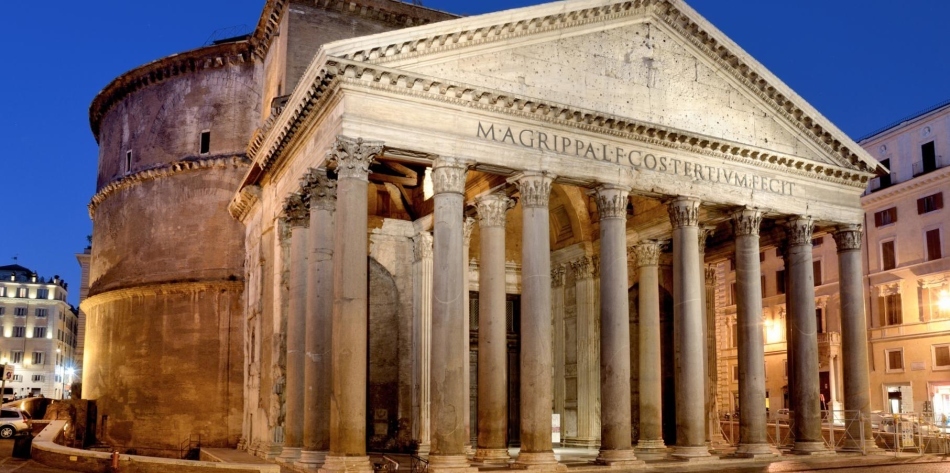 Pantheon, Rome, Italy
Pantheon, Rome, Italy Trevi Fountain
Trevi Fountain is one of the business cards of Rome, it can often be seen on advertising cards and booklets. It is located on a small square of the same name and occupies more than half of its space. The fountain adjoins one side to the palace of Poly and visually makes with it a single whole.
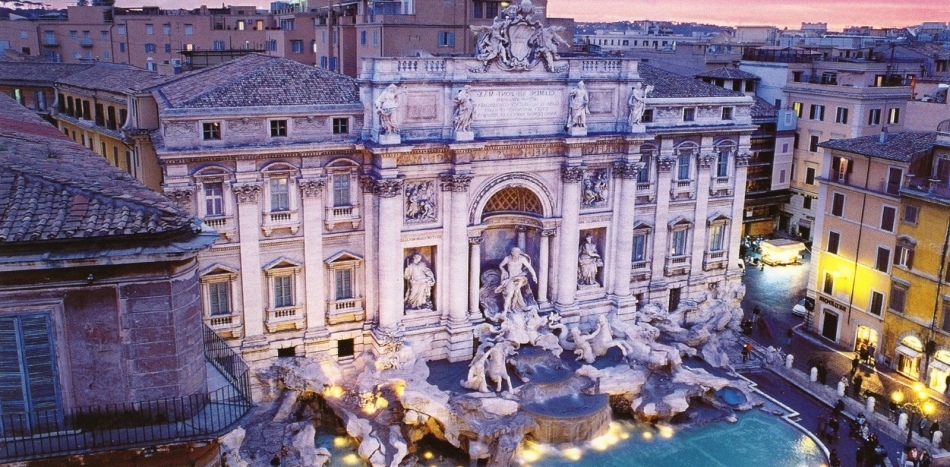 Trevi Fountain, Rome, Italy
Trevi Fountain, Rome, Italy Trevi Fountain is one of the favorite places for tourists. At any time of the year and days here you can not push yourself from people who want to capture themselves against the background of the famous fountain. There is a belief that if you throw a coin in the Trevi Fountain, you will certainly return to Rome again.
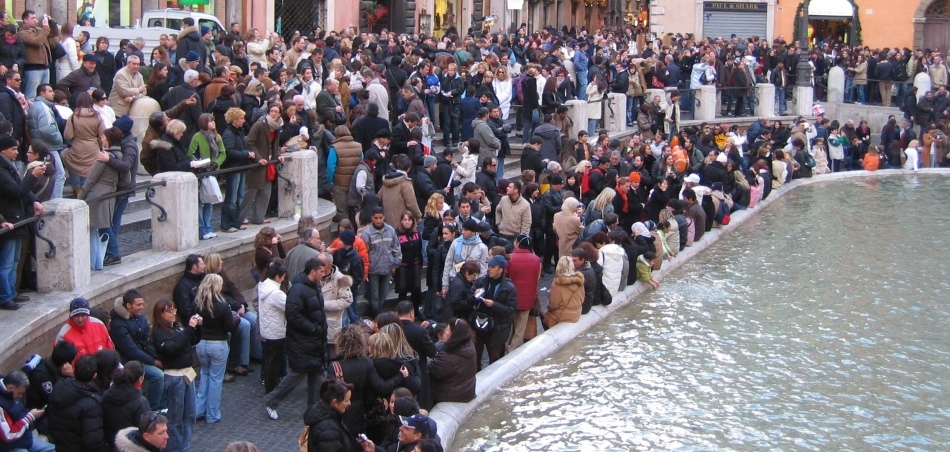 Tourists around Trevi Fountain, Rome, Italy
Tourists around Trevi Fountain, Rome, Italy Vittoriano
Vittoriano is a monument in honor of King Victor Emmanuel II, who managed to unite all Italian lands in modern borders. It occupies the entire northern slope of the Capitol Hill and its size is more like a palace than a monument. The monument is also often called the Altar of the Nation, and of Victor Emnuel II himself - the father of the nation.
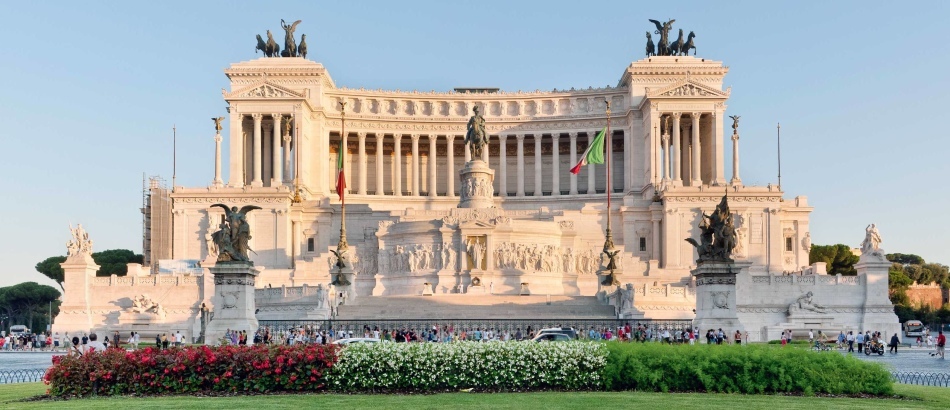 Monument to Victor Emmanuel II, Rome, Italy
Monument to Victor Emmanuel II, Rome, Italy At the foot of the monument is the grave of the Unknown Soldier, who since 1921 has a 24-hour honor guard with the best representatives of the Italian armed forces. The premises inside the monument are used as halls for the exposition of the Risorgimento Museum( Museum of the History of the Unification of Italy).Local residents do not like this monument very much for the fact that by its appearance and size it is knocked out of the general panorama of the city, it is even called a "wedding cake" for excessive whiteness and too pompous appearance.
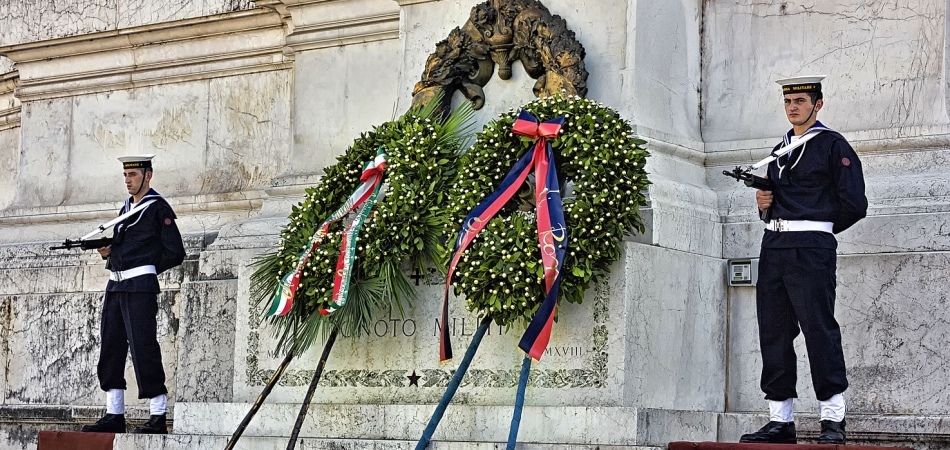 Guard at the tomb of an unknown soldier, Rome, Italy
Guard at the tomb of an unknown soldier, Rome, Italy Circus Maximus
Circus Maximus is the biggest stadium of Ancient Rome. It accommodated up to 250 thousand spectators and was intended for racing in chariot races. The very first building of the circus was built of wood in the 6th century BC, but it was destroyed several times by a fire, until a marble stadium was erected in its place.
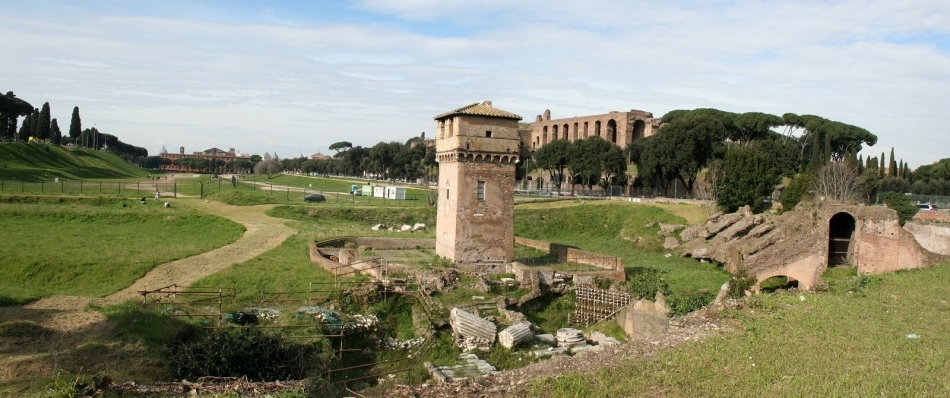 Circus Maximus, Rome, Italy
Circus Maximus, Rome, Italy In the 6th century AD the last race was held in the circus, after which the stadium began to desolate. Marble bricks, the locals were dismantled for other buildings, and today there is little to recall that this place was the most grandiose stadium of all time.
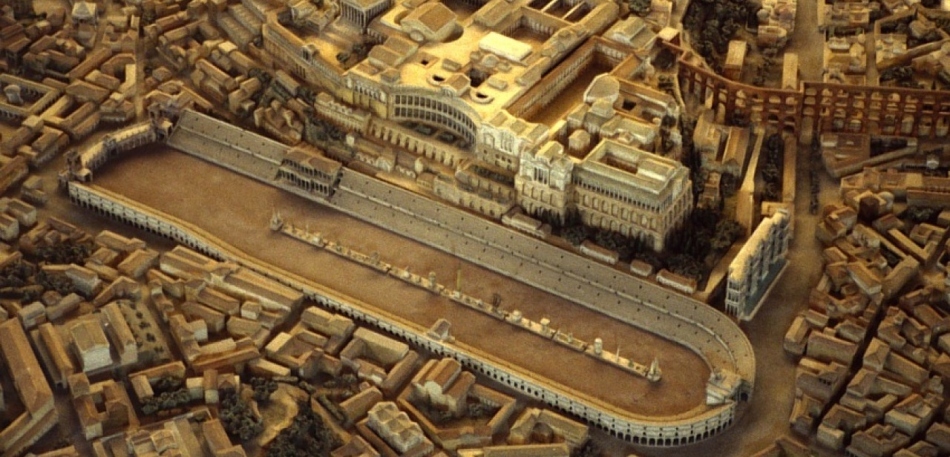 Circus Maximus, reconstruction
Circus Maximus, reconstruction Capitol Hill
Capitol Hill is the smallest, but the most important of the seven hills of Rome. The first human buildings discovered here during the excavation date back to the Iron Age. The hill was an ideal place for the first settlers, because its rocky steep slopes provided natural protection from external enemies, right next to the hill was the smallest part of the Tiber River, perfectly suitable for the crossing.
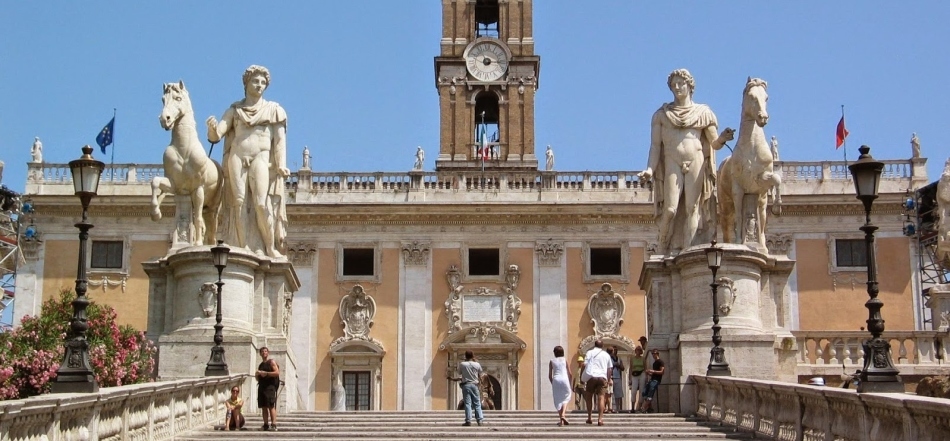 Capitol Hill, Rome, Italy
Capitol Hill, Rome, Italy In ancient times, the most massive and significant temples were built here, symbolizing the position of Ancient Rome as the center of the world. In the period from the early Middle Ages to the Renaissance, the Capitol Hill was depopulated, decayed, the temples were destroyed to the ground. For a while Capitol Hill was even used as a pasture for goats. In the Renaissance, Capitol Hill was rebuilt on the projects of Mielangelo. Today there is the City Hall and the Capitol Museum.
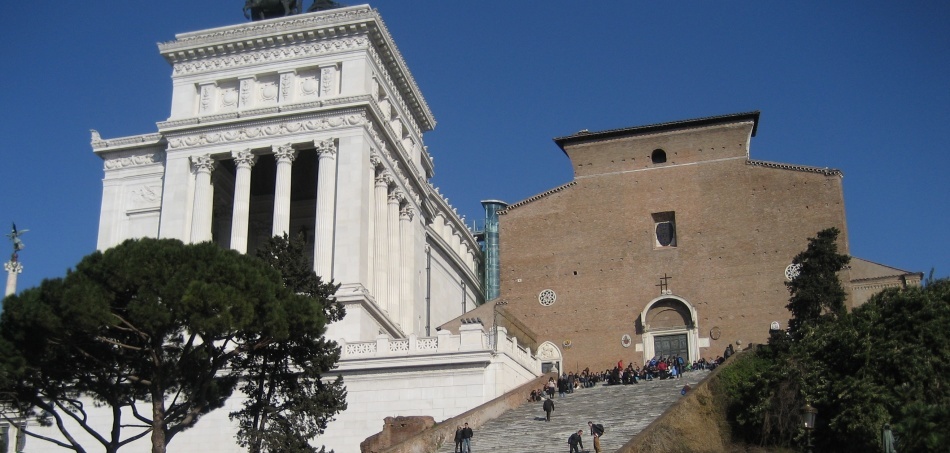 Capitol Hill, Rome, Italy
Capitol Hill, Rome, Italy Palatine
The Palatine is the central of the seven hills of Rome. According to legend, it was here that the founders of Rome Rem and Romulus were found in the cave. It is believed that it was here that Romulus laid the first stone in the construction of Rome, and it is from here that the Eternal City originates. In ancient times the Palatine was the most prestigious area for living, thanks to the beautiful views of the city and the cleanest air in the district( the hill towers over the city 70 meters).
 Hill Palatine, Rome, Italy
Hill Palatine, Rome, Italy It is not surprising that by the end of the era of the Roman emperors the hill was built up exclusively by houses and palaces of representatives of the higher caste. In the Middle Ages the Palatine was built up exclusively by monasteries and churches. Today the Palatine is a massif of ruins and the best place to study the archaeological history of the city.
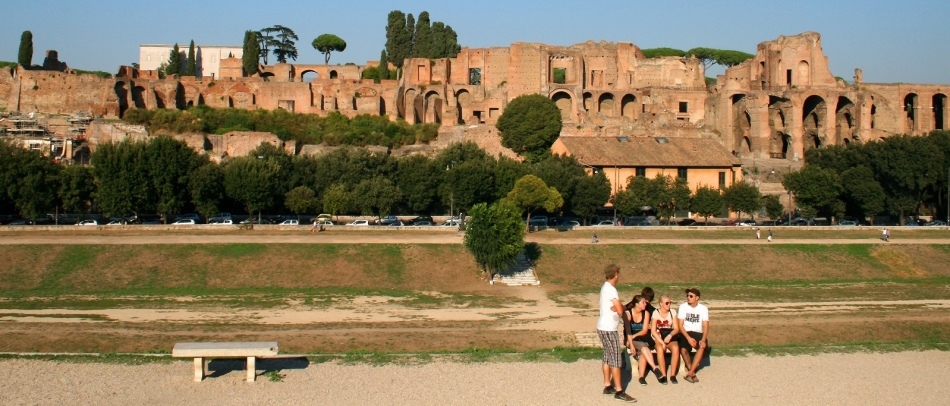 Palatine, Rome, Italy
Palatine, Rome, Italy Vatican
The Vatican is the smallest country in the world, a state in the state. About 800 residents live here, and none of them is permanent. The population of this tiny area consists of priests, monastics, guards, statesmen. The Pope of Rome is the head of the World's Throne. The Vatican has its own army - it is guarded exclusively by Swiss guardsmen, dressed in national uniforms.
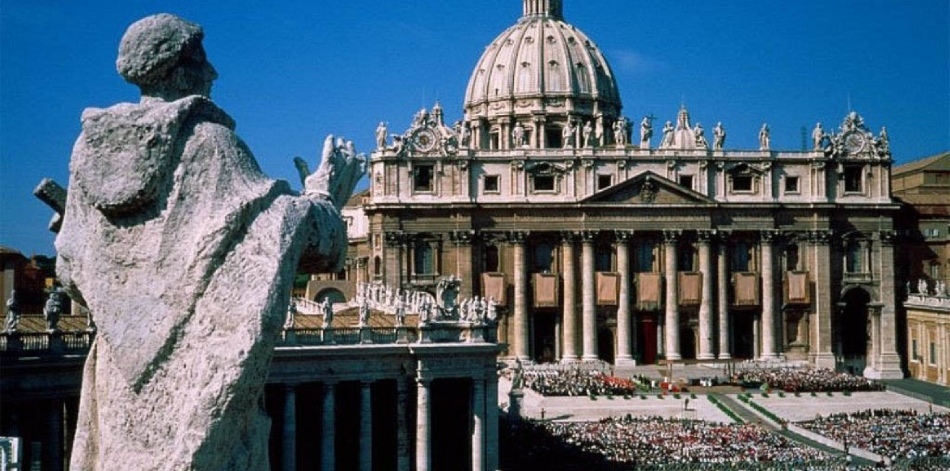 Vatican
Vatican St. Peter's Square - the main gate of the Vatican, as well as the place of mass meetings of Catholics on major religious holidays.
 St. Peter's Square, Vatican
St. Peter's Square, Vatican St. Peter's Cathedral
St. Peter's Cathedral is the largest church in the world. The cathedral is dedicated to one of the main apostles of Christ and is built on the place where St. Peter took martyrdom. The construction of the temple stretched for a century and a half, during which several architects were replaced, each of which made significant adjustments to the original design. The construction was completed in 1626, and since then St. Peter's Cathedral is considered the center of Christianity all over the world.
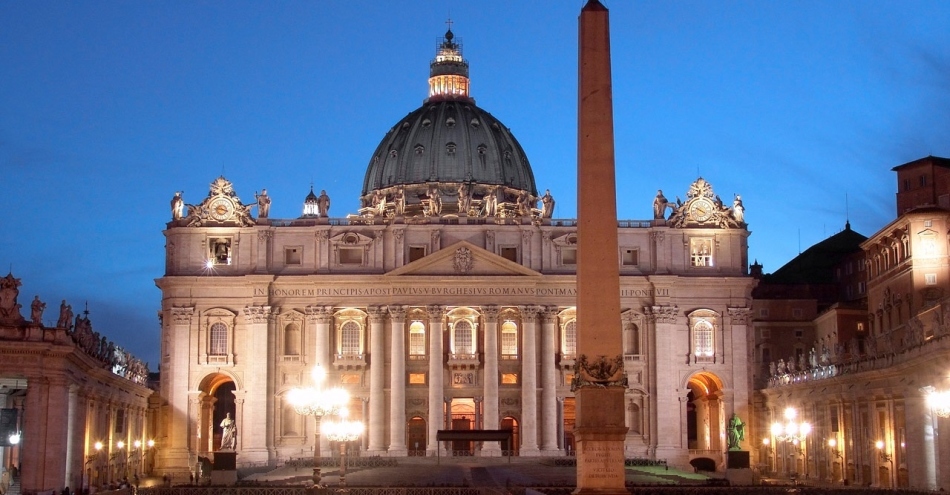 St. Peter's Cathedral, Rome, Italy
St. Peter's Cathedral, Rome, Italy The crown of St. Peter's Cathedral is a magnificent dome built according to Michelangelo's design. At the top of the dome is an observation deck, from where you can see a breathtaking view of the city. The entrance to the observation deck is paid, a visit to the St. Peter's Cathedral is free of charge, but there is a strict dress code, according to which clothes should cover the knees and elbows of the incoming, the ladies should additionally cover the decollete zone.
 Interiors of St. Peter's Basilica, Rome, Italy
Interiors of St. Peter's Basilica, Rome, Italy Vatican Museums
Vatican Museums boast one of the most impressive collection of works of art in the world. Most of the exhibits were donated to the popes for many years of rule, or they were purchased by the popes at the expense of the Church. The Vatican has its own tourist office, which is located on St. Peter's Square. Here you can order audio guides, buy ready-made tours, maps, booklets and much more.
 Vatican, Rome, Italy
Vatican, Rome, Italy You can also send a card to family and friends with the image of the best Vatican species.
Today the Vatican has thirteen museums located in two palace complexes. Do not even hope to see all this splendor in one day. The collection of art and historical values is so huge that it takes you a full day to complete a survey. In a few hours you can try to see at least the most basic.
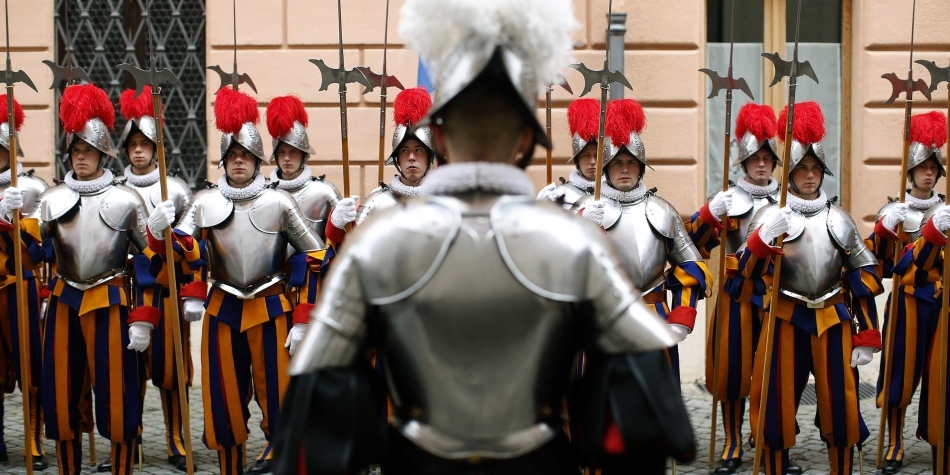 Vatican Guards
Vatican Guards Pinakothek contains paintings by Raphael, Caravaggio, Michelangelo, Perugino and other painters.
The historical museum shows the centuries-old history of the Roman papacy, there are objects of everyday use, religious relics, documents, photographs and other important exhibits.
 Pinakothek, Vatican
Pinakothek, Vatican The Museum of Pia-Clementa exhibits antique statues, frescoes and sculptures discovered in the vicinity of Rome during excavations.
The museum of Shiaramonti exhibits portrait busts and sculptures of noble Roman citizens of ancient times.
The Gregorian Museum of the Etruscans has the richest collection of items from the time of the Etruscans, who lived in Rome until the era of the ancient emperors.
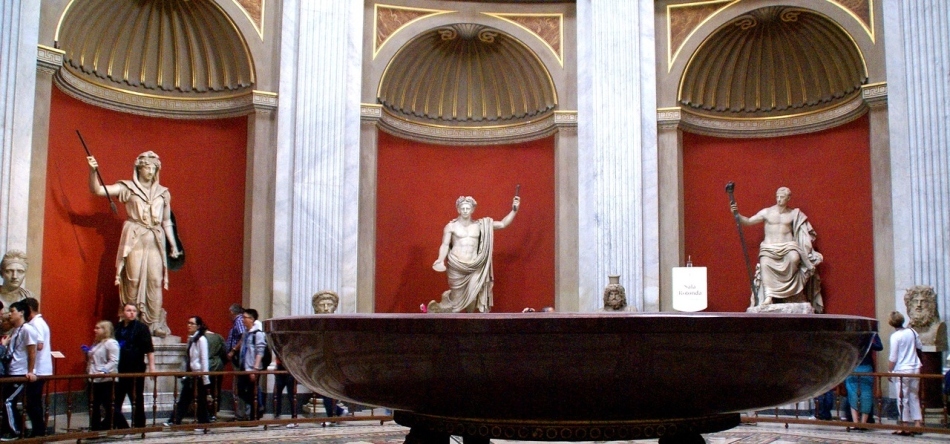 Exhibits of the Pia-Clementa Museum
Exhibits of the Pia-Clementa Museum The Egyptian Museum exhibits Egyptian art from stelae with hieroglyphics to copies of Egyptian statues of the second century BC.Also here is a collection of Egyptian mummies that were found during excavations of the necropolis of Deir el-Bahri in Thebes.
In the Museum of Modern Religious Art you can see the canvases of Dali, Kandinsky, Kokoshki, Le Corbusier, Matisse, Munch, Picasso, Rodin and Van Gogh.
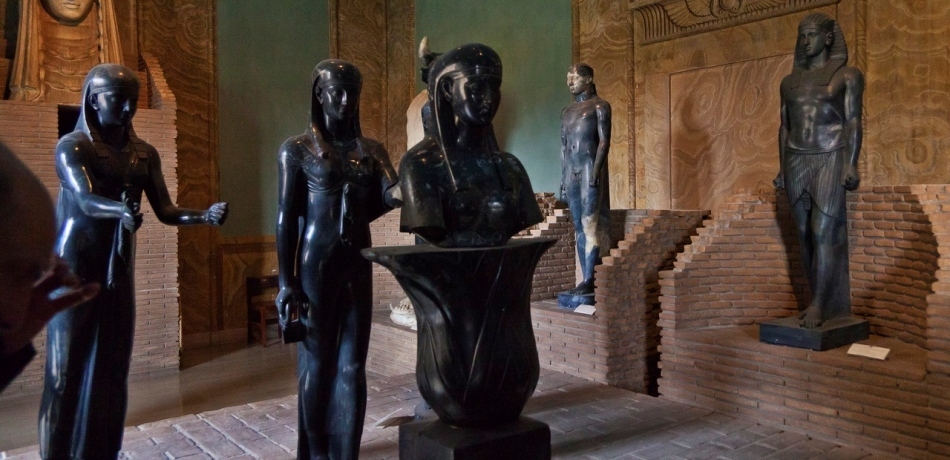 Egyptian Museum, Vatican
Egyptian Museum, Vatican The Piia Christian Museum contains a collection of sculptures, sarcophagi and mosaics from the early Christian era. The most famous object here is the statue of the Good Shepherd, created in the third century AD.
Ethnological missionary museum has objects of a religious nature from Asia, Oceania, Africa and America. Among the main: the statue of the god Quetzalcoatl from Mexico, masks from Sierra Leone and the wooden sculpture of the deity "tumatauenga" from French Polynesia.
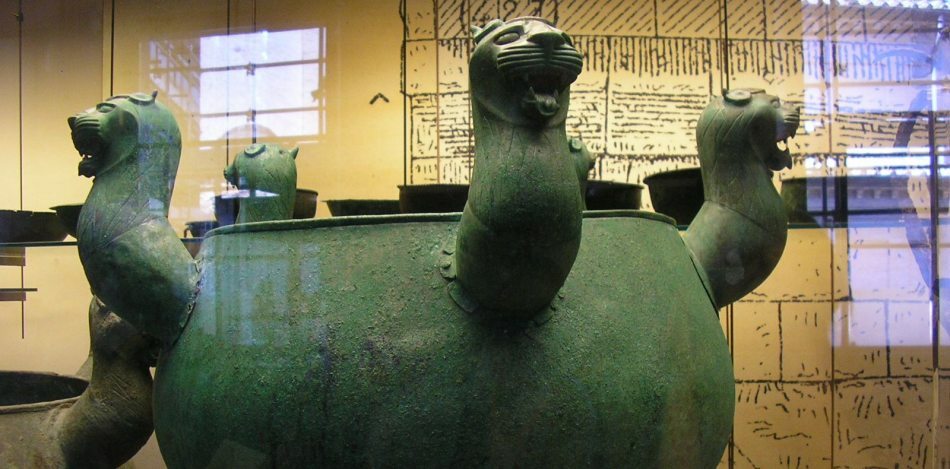 The Etruscan Museum in the Vatican
The Etruscan Museum in the Vatican The Vatican Library is one of the most important libraries in the world, it includes more than 500 thousand books and more than 60 thousand manuscripts, as well as ancient Christian objects found in Roman catacombs, medieval glassware and items made of precious materials and elephantbones.
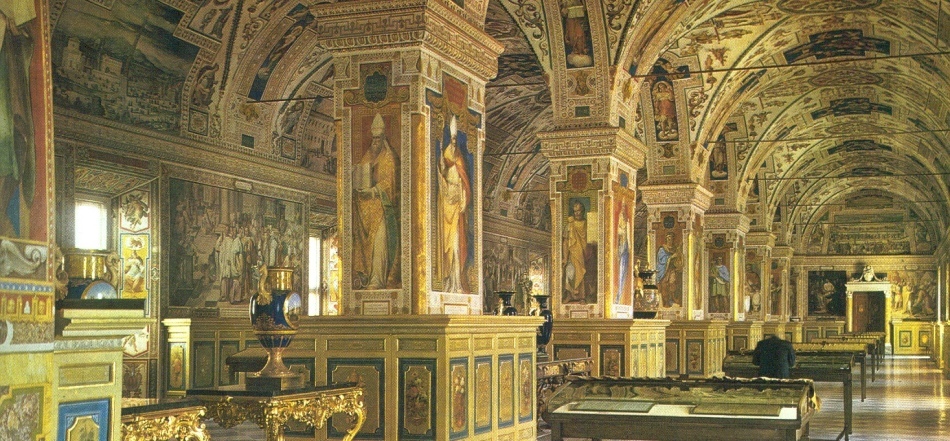 Vatican Library
Vatican Library The Sistine Chapel is undoubtedly the most famous landmark of the Vatican. The chapel was built in the fifteenth century as a private chapel for Pope Sixtus IV.In 1508, Pope Julius II asked Michelangelo to repaint the ceiling. However, Michelangelo decided to decorate the ceiling with nine scenes from the Old Testament. The most famous is the composition "The Creation of Adam," which shows how the Creator descends from heaven in order to breathe life into Adam. The walls of the chapel are also covered with Michelangelo's paintings. The most famous of the paintings is the Last Judgment on the altar wall.
 Sistine Chapel, Vatican
Sistine Chapel, Vatican Triumphal Arch of Constantine
Right next to the Coliseum is the arch of Constantine, built in the beginning of the fourth century in honor of the victory of Constantine over Emperor Maxentius. The arch, decorated with statues and bas-reliefs, has survived until our times relatively unscathed. Constantine believed that to win a dinner over Maxentius( which was originally considered unlikely) he was helped by the Christian God. As a result, during the reign of Constantine the persecution of Christians ended, Christianity became the official religion of the Roman Empire, and the capital of the empire in 325 AD was moved from Rome to Constantinople( then the capital of Byzantium, now Istanbul).
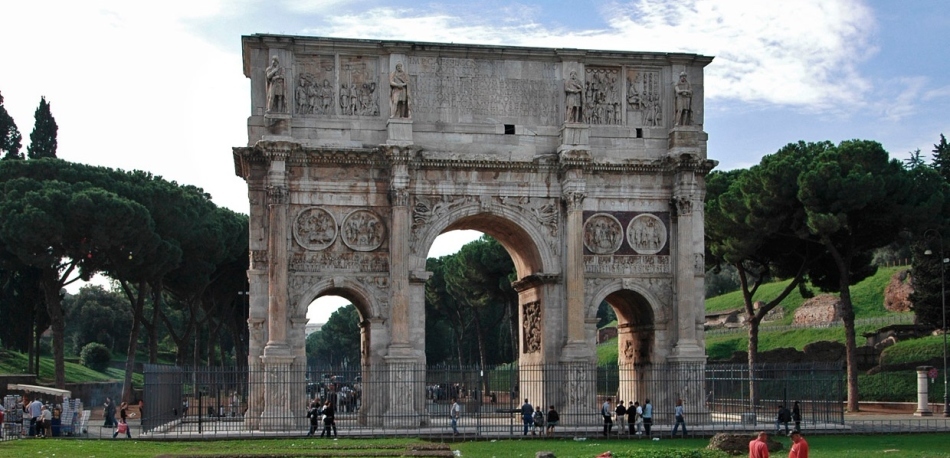 Arch of Constantine, Rome, Italy
Arch of Constantine, Rome, Italy Plaza of Spain
Piazza di Spagna is one of the most popular places for tourists. The central square of the square is occupied by the famous Spanish staircase, which connects the square with the church of Trinita dei Monti. Especially beautiful is the Spanish staircase in spring, during flowering azaleas, decorating the steps. The Spanish staircase is considered a favorite meeting place for tourists and townspeople.
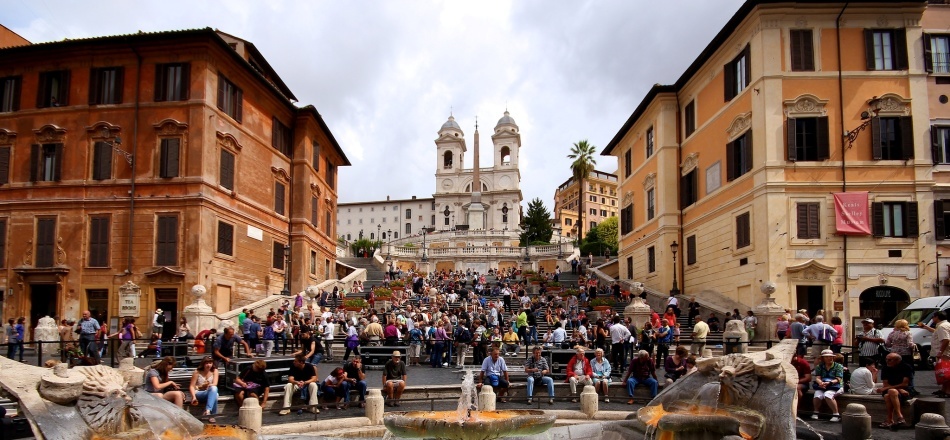 Plaza of Spain, Rome, Italy
Plaza of Spain, Rome, Italy At the foot of the stairs is the Barkacci fountain, which depicts a small fishing boat that survived on this place during the Tiber's devastating flood in 1598.On the opposite side of the square is the Spanish Palace and the Imperial Column, erected in honor of the doctrine of the Immaculate Conception of Christ. The top of the column is crowned by a statue of the Virgin Mary.
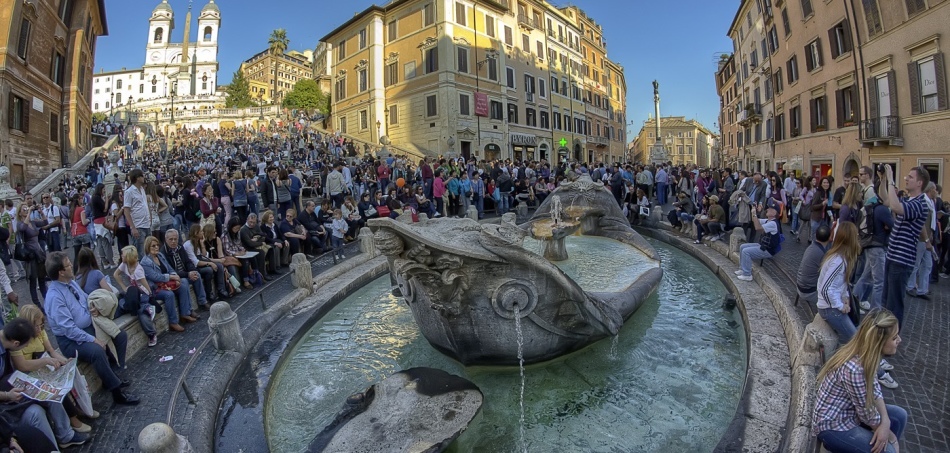 Rome, fountain of Barkacce
Rome, fountain of Barkacce Appia road
Via Appia Antica was once one of the most important roads in the world and the most famous of all the roads that emanate from Rome towards the far reaches of the empire. Originally the road was built in 312 BC by Appius Claudius Tsek, then censor of Rome, who became famous for building numerous urban infrastructure that helped ease the life of the Romans.
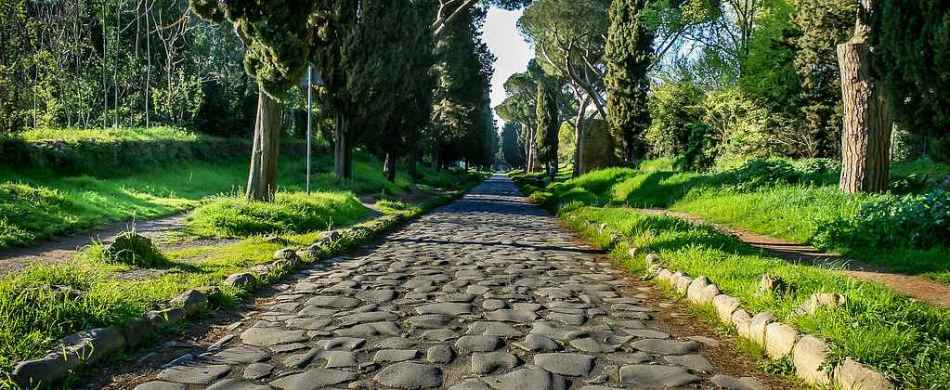 Appia road, Rome, Italy
Appia road, Rome, Italy The stones with which the road is paved are so well adjusted to each other that it is almost impossible to insert a knife between them. Since during the construction of the road it was forbidden to bury the dead in the city, aristocrats erected their tombs along the most important roads. Via Appia was also dotted with similar structures, some of which have survived to this day.
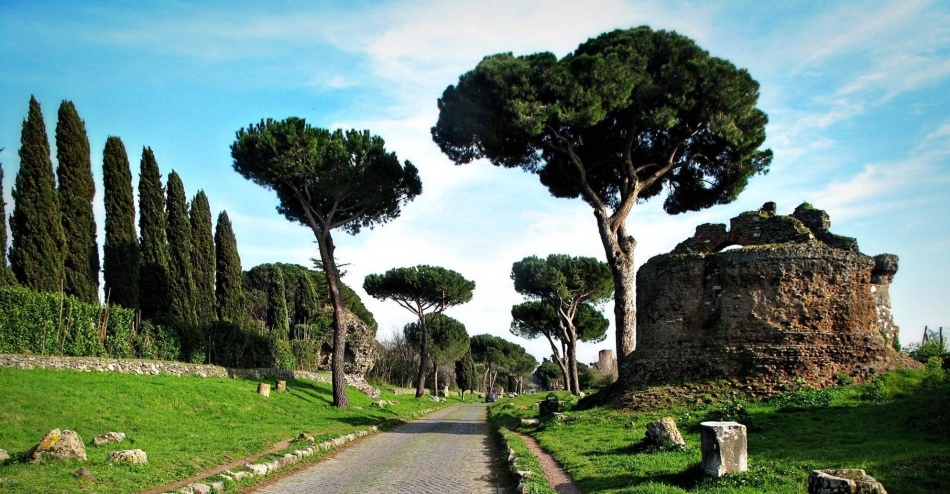 Via Appia, Rome, Italy
Via Appia, Rome, Italy Villa Borghese
Villa Borghese is the largest public park in Rome. In addition to walking areas, there are temples, fountains, statues and several museums. In ancient times and the early Middle Ages, numerous vineyards were broken here, but in 1605 Cardinal Scipio Borghese, nephew of Pope Paul V, turned the vineyards into a park.
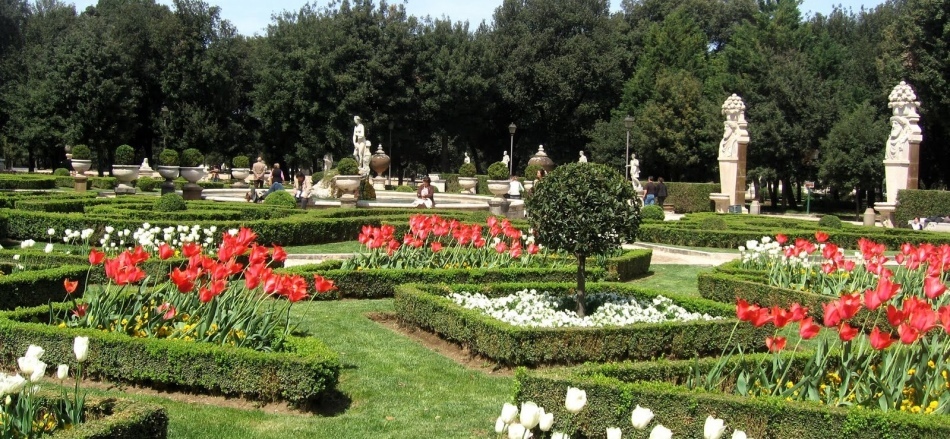 Park Villa Borghese, Rome, Italy
Park Villa Borghese, Rome, Italy At the end of the eighteenth century an artificial lake was created in the center of the park. On the island in the center of the lake is built a small temple of Ion, dedicated to Asclepius, the god of healing. In 1911, the World Trade Fair was held in the park. Some of the pavilions built by the participating countries are still preserved. The most famous of the museums is the Borghese Gallery, in which works of famous masters are on display, including Titian, Rubens and Raphael.
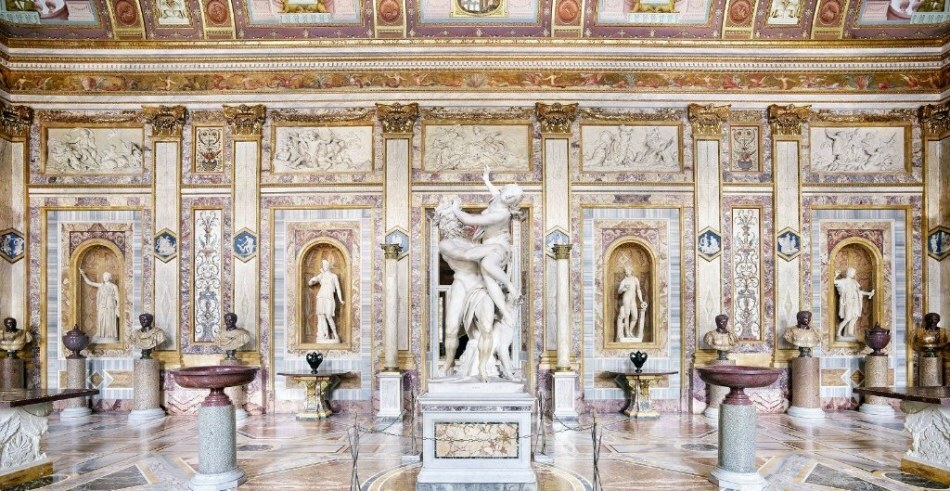 Gallery of Villa Borghese, Rome, Italy
Gallery of Villa Borghese, Rome, Italy Baths of Caracalla
The terms of Caracalla were built in 217 AD, during the reign of Emperor Caracalla, as the largest bath complex in the world. Baths functioned for more than three hundred years, in total there were from 6000 to 8000 visitors daily. The terms played a huge role in terms of hygiene, since in ancient times Rome was so overpopulated that there was simply no space left for sanitary facilities within the city.
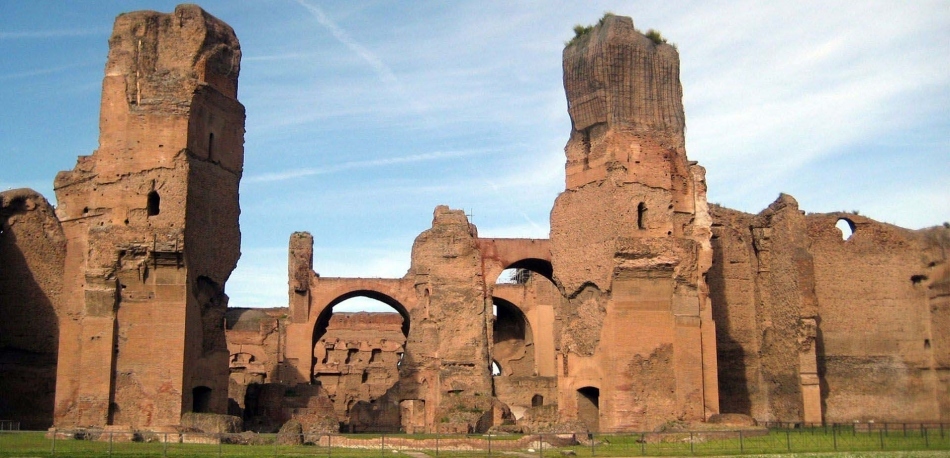 Terms of Caracalla, Rome, Italy
Terms of Caracalla, Rome, Italy Termas also performed an important entertaining and communicative role, as here the Romans came to talk, listen to gossip and relax. Here there were sports halls, libraries, gardens, art galleries, restaurants and even brothels. The complex of Caracalla was known for its rich interior, for example, marble seating, mosaic walls and floors, as well as fountains and statues.
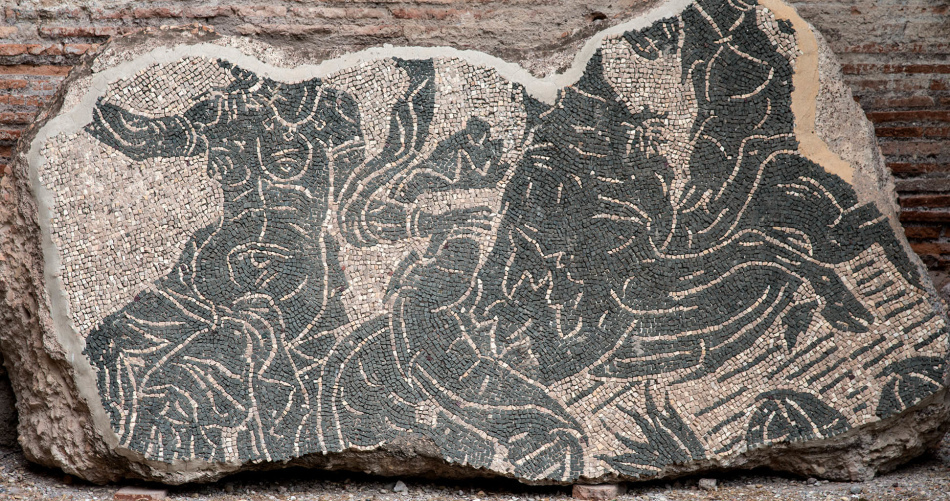 Fragment of the floor mosaic, Rome, the terms of the Caracalla
Fragment of the floor mosaic, Rome, the terms of the Caracalla of the Mouth of Truth
The mouth of truth is an ancient Roman marble disc with relief carving in the shape of a person's face. According to the legend, if you put your hand in the bas-relief's mouth and say untruth, the mouth will immediately close and the liar will lose his hand. Historians are not sure that the original purpose of the disc was exactly this, but in the Middle Ages the bas-relief was used precisely as a lie detector.
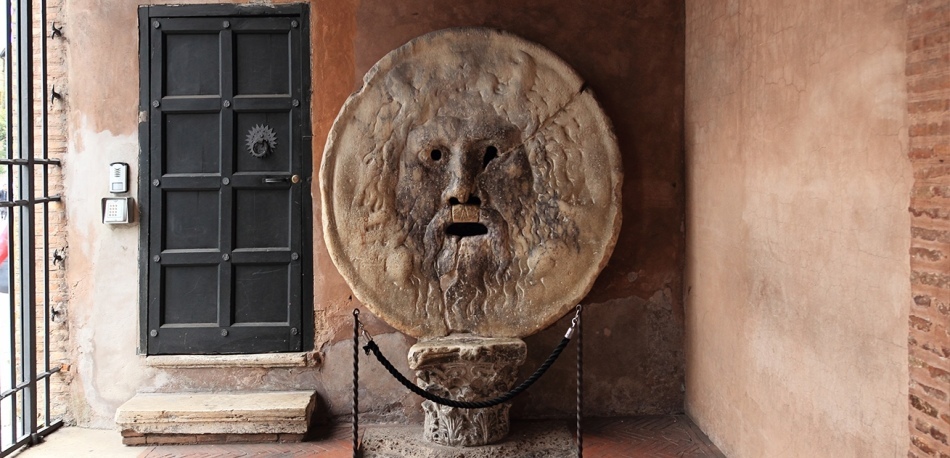 The Mouth of Truth, Rome, Italy
The Mouth of Truth, Rome, Italy The legend has grown so much in the daily life of the Romans that even today parents frighten the mouths of the Truth of their children. In the legendary film "Roman Holidays" there is an episode when the heroine Audrey Hepburn tries to put her hand in the Mouth of Truth. The bas-relief is on the left wall of the portico of the church of Santa Maria Cosmedin.
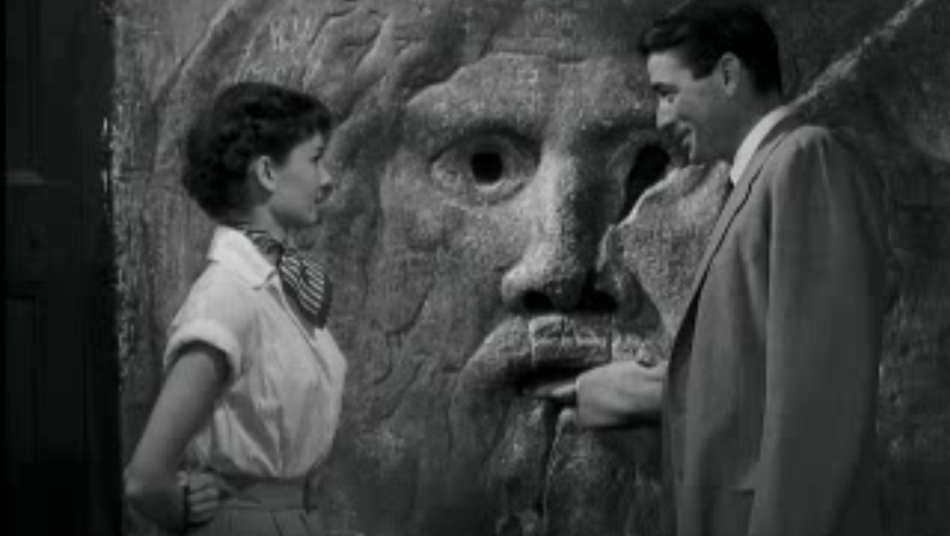 Fragment of the film "Roman Holidays" with Audrey Hepburn
Fragment of the film "Roman Holidays" with Audrey Hepburn Church of Santa Maria Maggiore
The Basilica of Santa Maria Maggiore is the largest church in Rome dedicated to the Virgin Mary. The church, which dates back to the fifth century, has a magnificent interior with a very impressive gilded ceiling and chapel. The church is located on the top of the Esquilino hill. Its name means that it is the most important of the eighty churches in Rome dedicated to Mary.
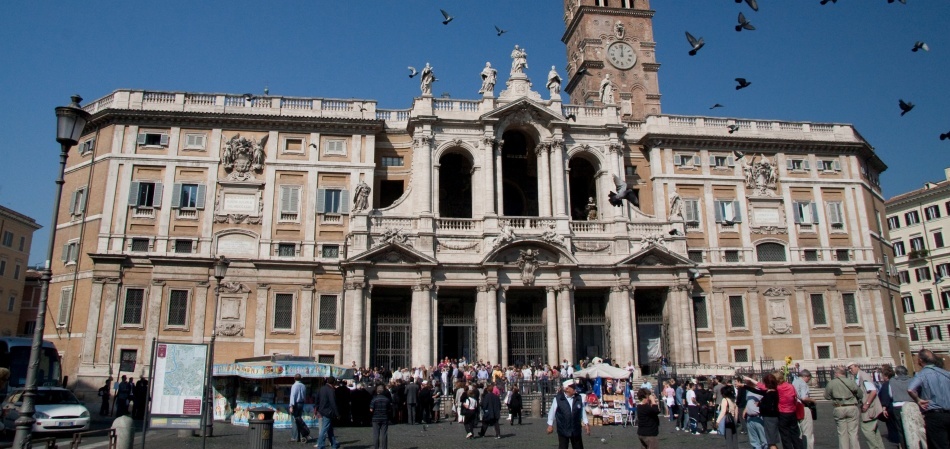 Church of Santa Maria Maggiore, Rome, Italy
Church of Santa Maria Maggiore, Rome, Italy The church is sometimes called Santa Maria della Neve( Saint Maria Snowy).According to the legend, the Virgin Mary appeared to the local landowner in a dream and told him to build a church on the spot where he would see the snow. The next day, at the height of summer, on Esquilino hill there was snow in the form of a floor plan for the church. Despite the beautiful legend, however, there are no documents confirming this story.
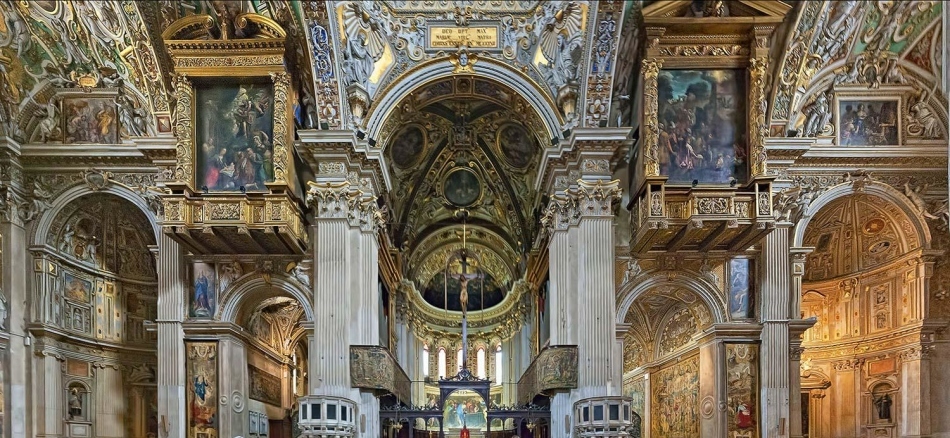 Interior of the church of Santa Maria Maggiore, Rome, Italy
Interior of the church of Santa Maria Maggiore, Rome, Italy Campo de Fiori
The name of the square is translated as a "field of flowers", as once there was a meadow on the place of the square. Despite the fact that the meadow was located in the very center of the city, it was never built up, because it was in this place that the Tiber would be inclined to flood the shore every spring. In the 15th century, trading rows began to appear on the meadow's place, and gradually the place became a market square. At Campo de Fiori, the buildings are somewhat chaotic because it has never been built according to plan.
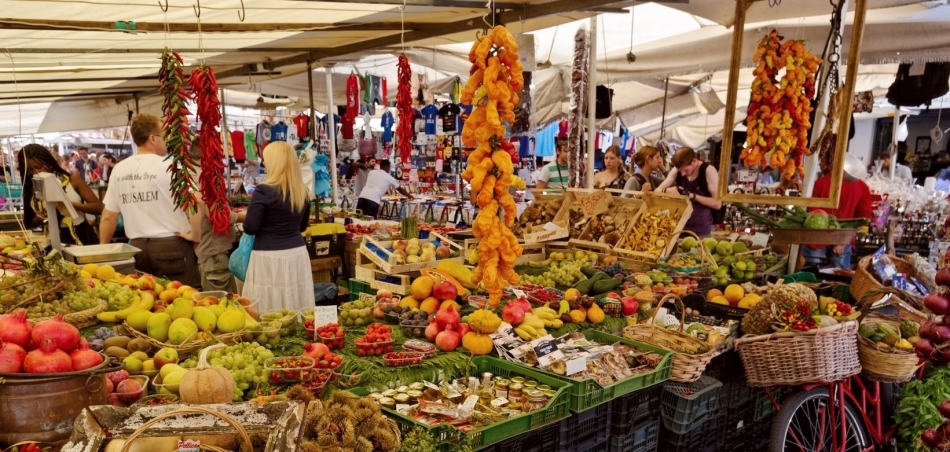 Market in Campo de Fóri, Rome, Italy
Market in Campo de Fóri, Rome, Italy In the Middle Ages, the square of Campo de Fiori gained the notoriety of public executions. Here, criminals and heretics accepted death, and the methods of killing were the most sophisticated and painful. In 1600, it was here by the decree of the Inquisition that the great astronomer Giordano Bruno was burned for the idea that the earth revolves around the Sun. In 1887 a monument to Giordano Bruno was erected on the square.
 Monument to Giordano Bruno at Campo de Fóri, Rome, Italy
Monument to Giordano Bruno at Campo de Fóri, Rome, Italy Roman Catacombs
Catacombs of Rome were used in the era of early Christianity as a place where Christians sheltered from persecution of Romans for their faith. Here they safely performed their religious rites, and here they organized the first secret burials of the dead Christians. Subsequently, the catacombs began to be used for burials throughout the city, because at the top due to overcrowding there was no place for cemeteries and tombstones.
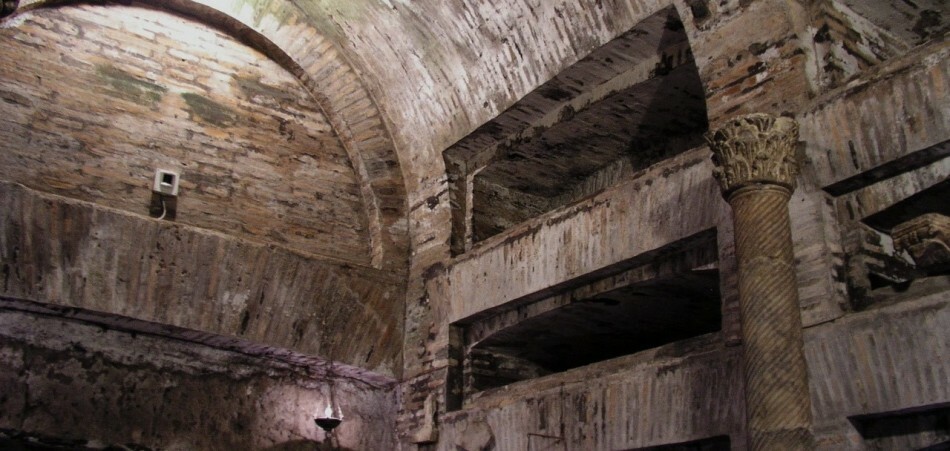 Niches for burials in the Roman catacombs
Niches for burials in the Roman catacombs By the V century burial in the catacombs had ceased, but the catacombs had gained popularity as places for pilgrimage and worship of the holy relics of the first Christians. The catacombs began to decline after the church began to gradually withdraw the relics of the saints and place them in the numerous temples and basilicas that were built at the top. Since the end of the IX century, the catacombs have been buried in the long 10 centuries and reopened only in the 19th century.
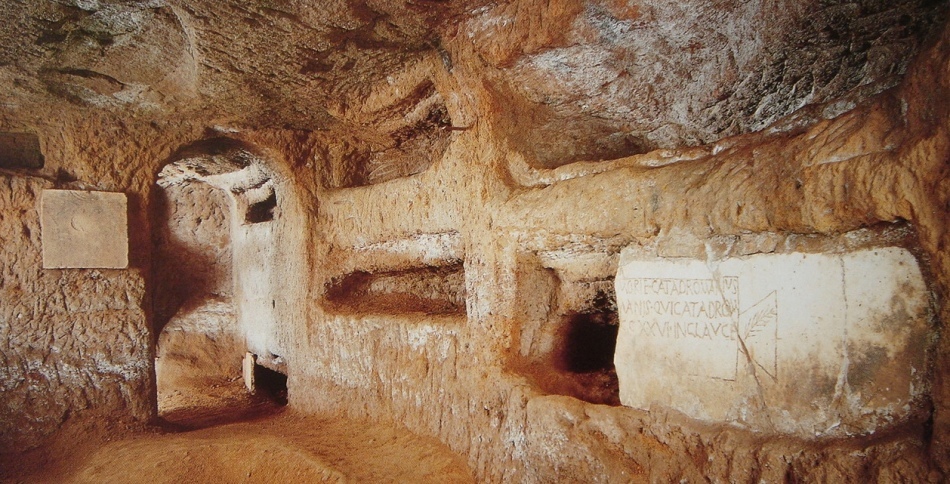 Catacombs of Rome, Italy
Catacombs of Rome, Italy See the location of the attractions described in the article, as well as find other objects to visit while traveling to Rome you can on the map of Rome in Russian , which you can download here
